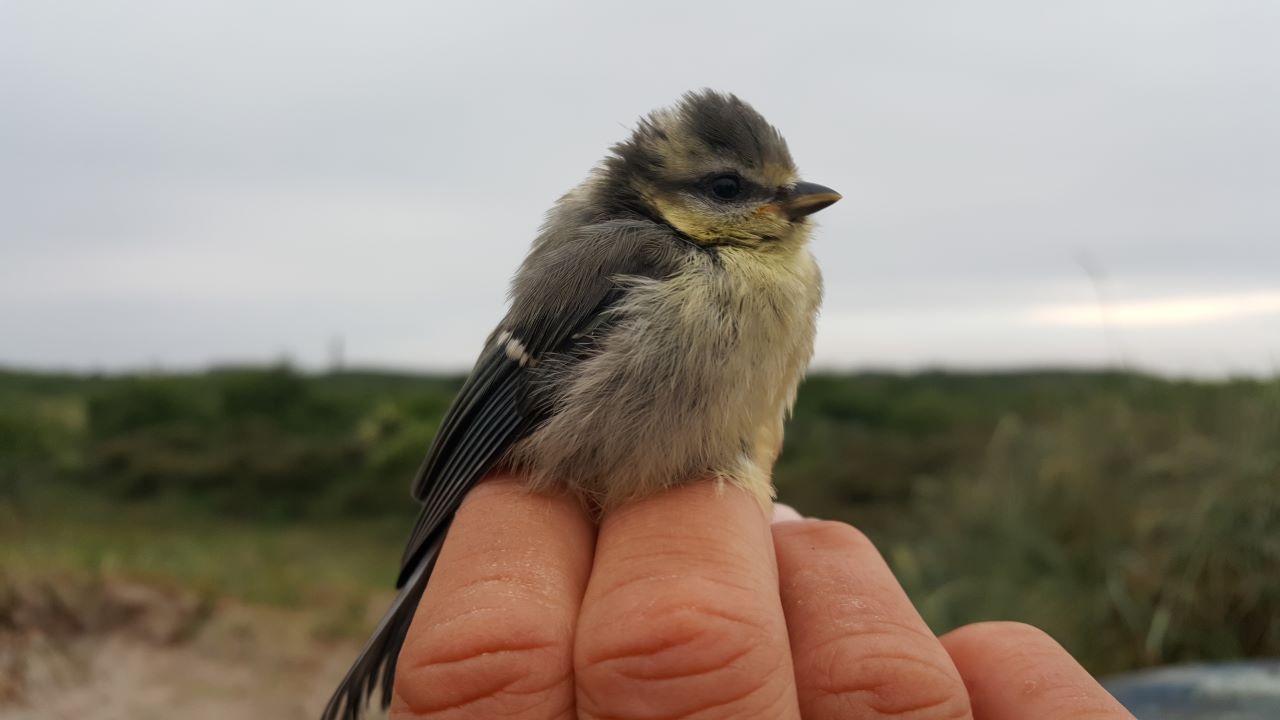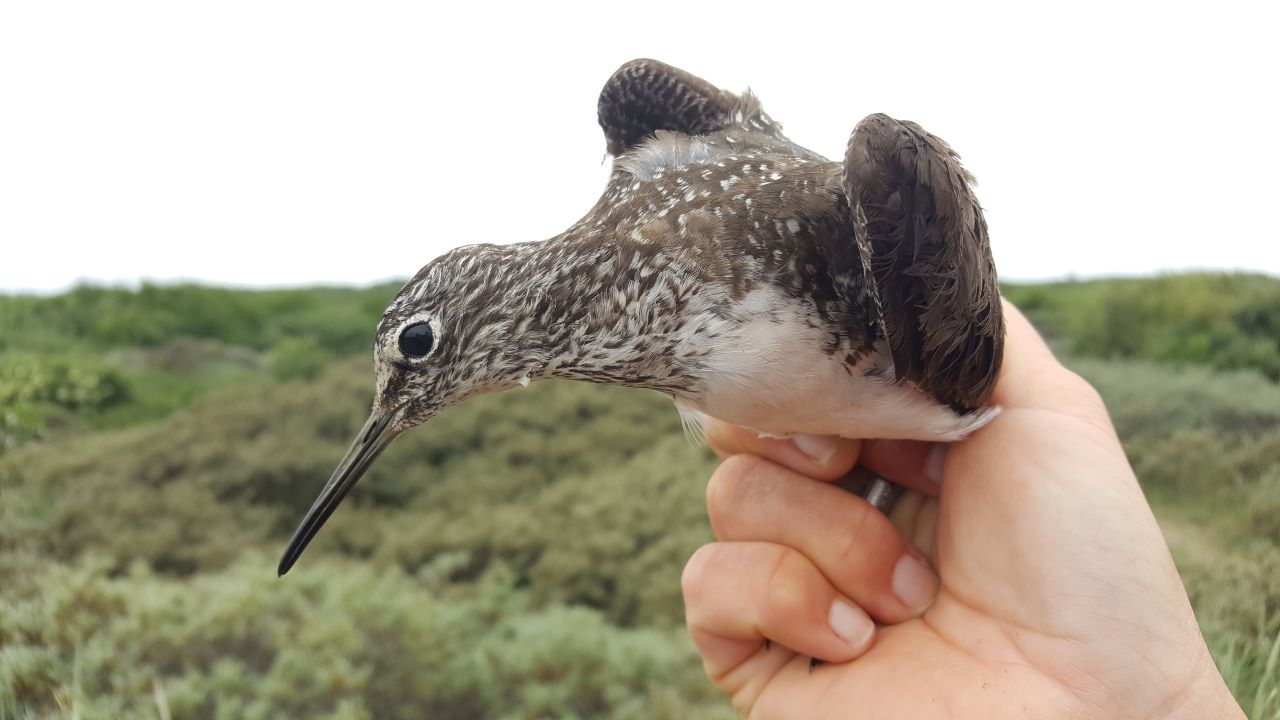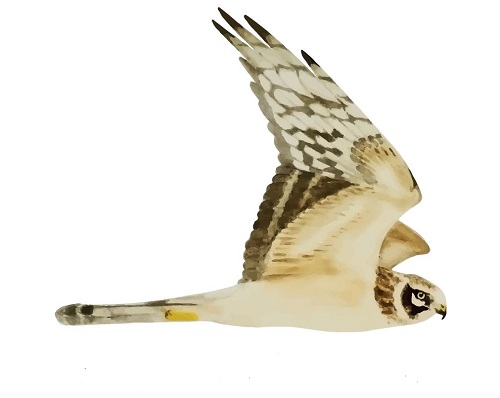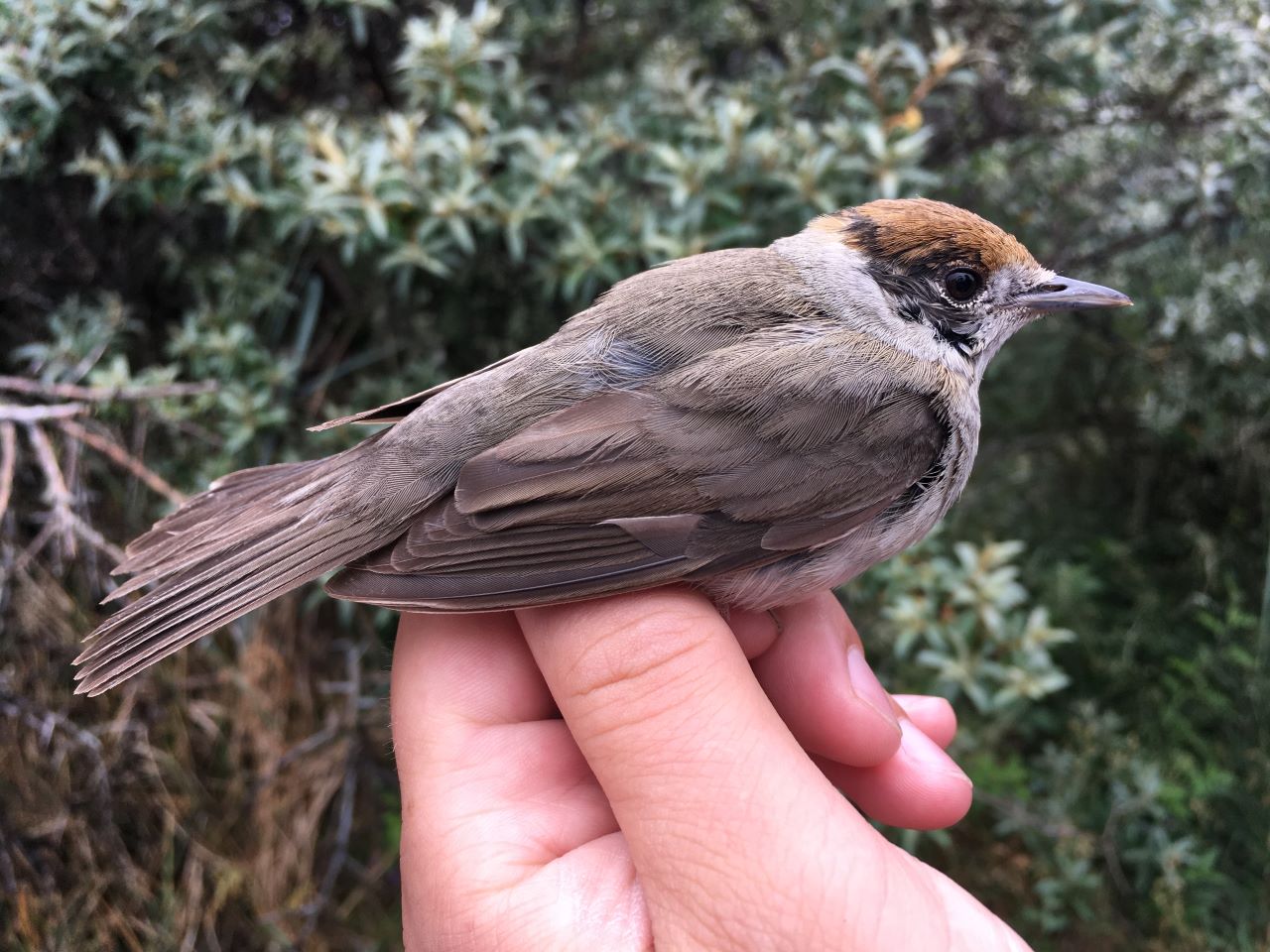Her på Skagen Fuglestations blog bringes korte nyheder i dagbogsformat om hændelser på fuglestationen.
After the storm – migration continues
We learned in the last few days that the weather forecast should not always be trusted so despite the bad forecast I woke up early this morning to check if it was still raining and what the rain radar said. It was not raining and according to the rain radar the rain, after all, had passed much faster than initially expected and we could go out ringing at the normal time. So we got up and went to Kabeltromeln as usual. We opened the nets but knew that after a rainy night probably not a lot of birds would be in the nets.
To our surprise actually it seems like warbler migration might have picked up a little again, despite the weather. More birds are expected next week with continuous southerly winds. This should also let raptor migration pick up again. We caught both reed warblers (rørsanger) and marsh warblers (kærsanger) today, which is nice because they are very difficult to distinguish unless you hear them singing. Seeing them next to each other always helps a lot in distinguishing two species.
We also caught the by now mandatory blackcaps again, but not as many as the last few days. However, we caught a really interesting one, which, once again, proves what I said here earlier: catching lots of birds of one species can give you some very interesting insights in many topics.
We caught a female blackcap that was showing a streak of black in its cap – probably male colouration. It is not often seen in the wild, but also it is only obvious in birds with strong sexual dimorphism, but birds with both male and female plumage have been reported before and studies on captive birds show that birds can actually completely reverse their sex and female birds can even develop male gonads (Riddle, 1924, Proceedings of the American Philosophical Society). It would be really interesting if this bird is on its way to change its sex or if it just has a little genetic “defect” that causes this colouration (note: the black was only on one side of the head, the other side looked normal female).
Next to the “usual suspects” we also had a couple blue tits (blåmejse) recently fledged. Both of them flew very well, although you could tell from the flight the lack of experience. It is always amazing, though, to think how quickly young birds learn to fly. After all, it requires a very good coordination – especially the landing.

A nice surprise was the pied flycatcher (broget fluesnapper) which we normally only get during migration a lot earlier or much later in the year. This one was probably a male that either decided that it doesn’t want to breed this year and still enjoy its youth a little bit more, or it has arrived at the breeding grounds but didn’t find a partner (since females tend to choose males with stronger coloration, which, in this species, comes with older age) and then decided to start its way back to the wintering grounds earlier. Or it was just lost on the northward migration and is now just really, really late – which means that probably anyway he won’t breed this year. Of course, flycatchers are among our favorite birds here, since they eat mosquitos, which we are very happy to sacrifice to the birds.
We did not catch many birds and after six hours we wanted to close the nets as usual. On the closing round, we found a very big surprise in the net: a green sandpiper (svaleklire). Shorebirds have a very long and generally very early migration season. It is also well know that the spring and fall migration of shorebird overlap – so while some of them still migrate to their breeding grounds, others are already on their way south. This bird was probably already on its way south. Green sandpipers winter in the Mediterranean and in subtropical and tropical Africa.

In the afternoon we welcomed the new guests for the apartment and we had a meeting with Simon since he had not been here the whole week.
Ringmærkning (Kabeltromlen):
Havesanger – Garden Warbler - 1
Tornsanger – Common Whitethroat – 1
Munk – Blackcap – 7
Kærsanger – Marsh Warbler – 7
Rørsanger – Reed Warbler – 6
Blåmejse – Blue Tit – 2
Broget Fluesnapper – Pied Flycatcher – 1
Løvsanger – Willow Warbler – 1
Svaleklire – Green Sandpiper - 1
Total: 27
People : Martina Hillbrand, Simon S. Christiansen, and Amandine Doré
Klik her for at se dagens observationer indtastet i Dofbasen af observatører i området
Klik her for at se opsummeret observationer af rovfugle i Skagen




